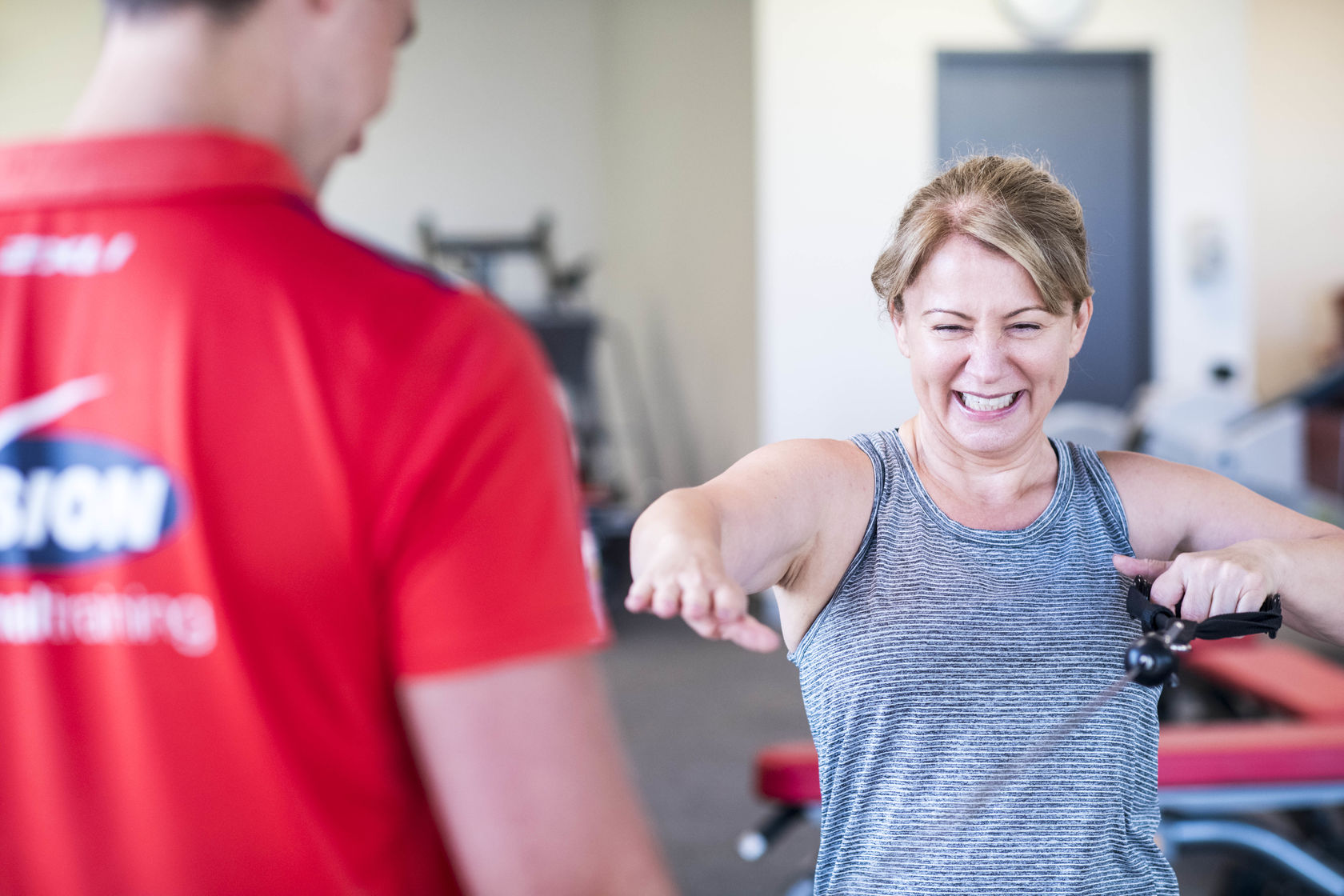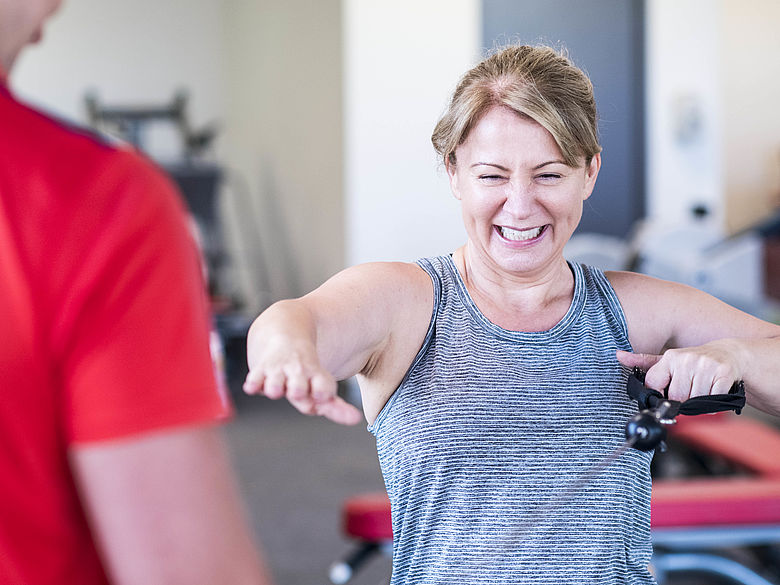The term 'menstrual cycle' refers to the changes that occur naturally in a woman's body to prepare for pregnancy.
The length of a woman's menstrual cycle can vary throughout her lifetime, and can be influenced by various factors including, but not limited to; stress, emotions, weight changes and excessive physical activity (Woman's Health Queensland, 2018).
In relation to a woman's training and/or body composition, the menstrual cycle has a huge influence on a female's metabolic state and training performance.
Firstly, there are four stages to consider during a woman's menstrual cycle. They are the follicular, ovulation, luteal and menstruation stage. Each stage is characterised by different emotional and physiological effects of various degrees and is experienced uniquely by each and every woman. Some points to consider in relation to training:
- The follicular stage is characterised by increased tolerance for pain and levels of endurance, so use this to your advantage and focus on physical progress and strength gains;
- Insulin sensitivity may also increase during the follicular stage. A woman's body may prioritise using glycogen in her muscles as fuel;
- Higher levels of oestrogen during the ovulation stage can make a woman's body more prone to injury, so technique during training is particularly important;
- Ovulation (and during menstruation) may be associated with pain, headaches, fatigue and lower pain tolerance;
- A woman's body may increase reliance on fat as a fuel source during the luteal stage, so target low to moderate intensity training, (Jennings, 2017). Lighten the load as you experience increased weakness and tiredness; and
- When the menstrual cycle comes to an end, a marked increase in energy and improved mood will be experienced and the whole cycle begins again (Norman, 2016).
Follicular stage (up to approximately day 14)
The first stage of the menstrual cycle is characterised by an increase in oestrogen and an increased tendency to use glycogen (carbohydrates) as a fuel source. Woman should seek to train harder during this stage, particularly focusing on strength training, as her body will utilise the glycogen in her muscles to boost the chance of developing strength and lean muscle mass. A higher level of pain tolerance allows a woman to push harder and longer during training as well, so during this stage of the cycle focus on trying to improve personal records (Clarke, 2014).
For those looking to lose weight, the follicular stage is beneficial for those women by helping build lean muscle mass and strength. Building lean muscle mass will increase overall resting metabolic rate and therefor, increase the chance for weight loss and the preservation of muscle. However, while an overall increase in metabolism may be experienced, resting metabolic rate will be at its lowest at the time of ovulation (Clarke, 2014).
Support your training during this time by making sure you are consuming adequate, or even slightly higher carbohydrates to fuel muscles and help you reach new personal records, particularly when lifting weights.
Ovulation stage (approximately day 14)
Interestingly, at the time of ovulation a woman will be at her strongest. Her muscles will produce maximum force generation, so if you were looking to hit a new personal record, now would be the time. Oestrogen levels peak and progesterone levels start to increase. However, due to hormonal changes, there is a higher risk of injury and a slow down in the ability of the body to repair tissue due to a decrease in collagen metabolism. A high focus on technique is a must during training, while also a balanced mix of carbohydrates, proteins and fats is essential (Jennings, 2017).
Luteal phase (approximately 14 to 28)
Proceeding into the luteal stage, women will see significant shift in both physiological capabilities and mental mood. If you're looking to improve your body composition, this stage will be beneficial in targeting fat as a fuel source. But on the flip side, a desire to increase nutritional intake will be experienced as a result of:
- Higher than normal body temperature;
- Progesterone levels continuing to increase;
- Increasing resting metabolism; and
- Insulin sensitivity bring at its lowest.
A well-controlled diet is essential to either maintain or continue to improve body composition. A natural instinct will be to eat more carbohydrates to cause rapid release of serotonin to instantly provide a mood boost and a natural high (a decrease in serotonin production will result in reduction of mood and increased irritability), however, during this stage insulin sensitivity will be at its lowest and therefore, a prime time to opt for lower carbohydrate and lower calorie diets to encourage fat burning. Additionally, an increase in the thermic effect of food will also be experienced, meaning, the body will utilise more calories to digest food (Clarke, 2014).
Training considerations include moving towards lower intensity and moderately paced training. This is due to higher cardiovascular strain and a decrease time to exhaustion. During this stage, focus on lower-intensity cardio and moderate strength work, a perfect time to focus on improving body composition as the body will favour using fat as a fuel source. Additionally, an increase in water retention will also be experience, so sprint-like training activities may provide some discomfort.
It is important for women to understand that it is okay to alter their exercise program during the luteal phase to match their energy and mood. Reduce load during weight training and engage in mixed training such as circuit training (Norman, 2016).
The menstruation phase (approximately day 28)
During this transitional period (from the first day of bleeding to the completion of menstruation) women can expect return to feeling like their normal selves. Water retention will clear, body temperature will return to normal, cravings will subside, insulin sensitivity will begin to increase and a women's metabolism will begin to slow down. Returning to the follicular stage is the time to return to more intense training regime, as the entire process has already started to begin again.
Reference list
Clarke, S. (2014). The Hormone Cycle and Female Lifters. Retrieved from https://www.t-nation.com/training/hormone-cycle-and-female-lifters
Jennings, R. (2017). Performance nutrition during the menstrual cycle. Retrieved from https://www.nutritionist-resource.org.uk/nutritionist-articles/performance-nutrition-during-the-menstrual-cycle
Norman, N. (2016). How to Work With a Female Client's Menstrual Cycle for Better Results. Retrieved from https://www.theptdc.com/2016/10/women-weightlifting-menstrual-cycle/
Woman's Health Queensland. (2018). Understanding your menstrual cycle. Retrieved from https://womhealth.org.au/conditions-and-treatments/understanding-your-menstrual-cycle-fact-sheet
*Disclaimer: Individual results vary based on agreed goals. Click here for details.

